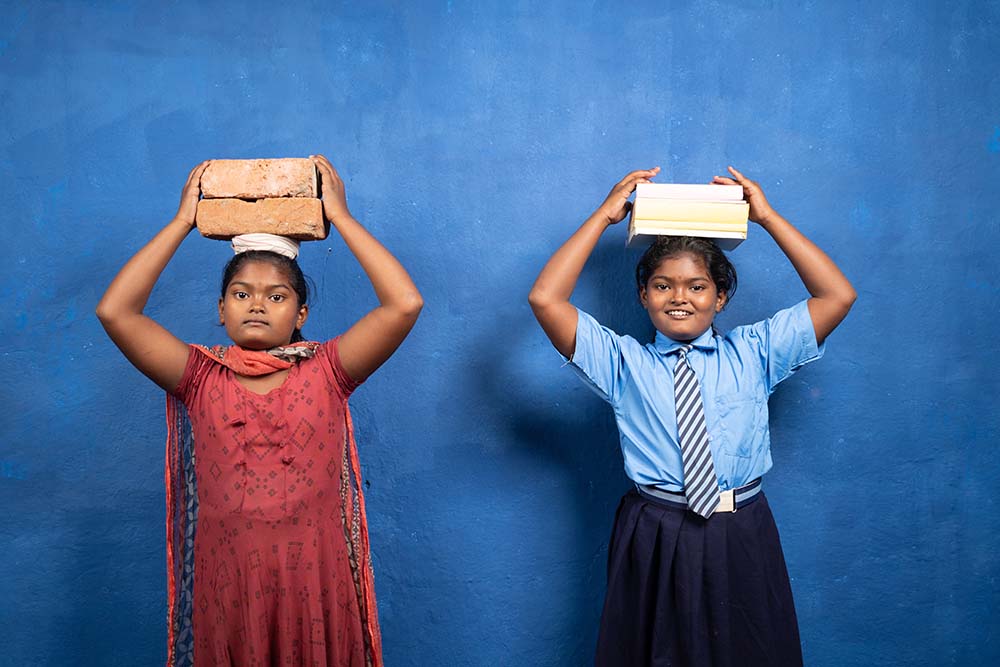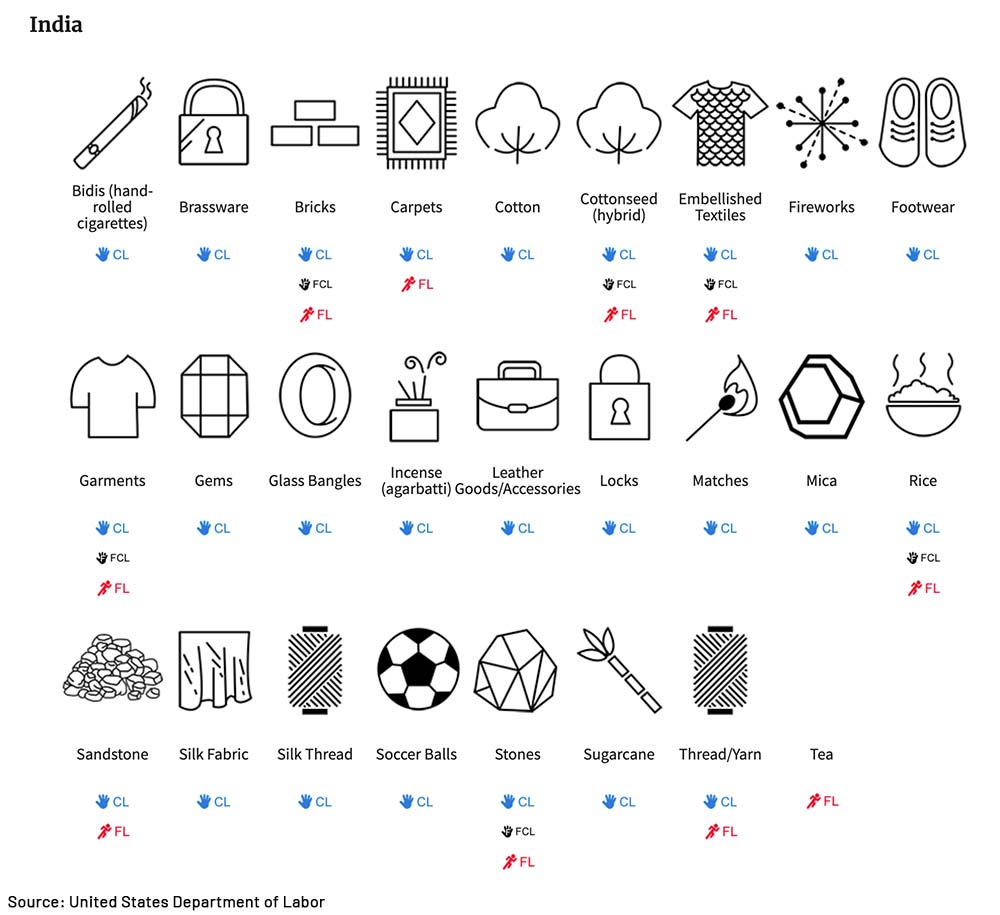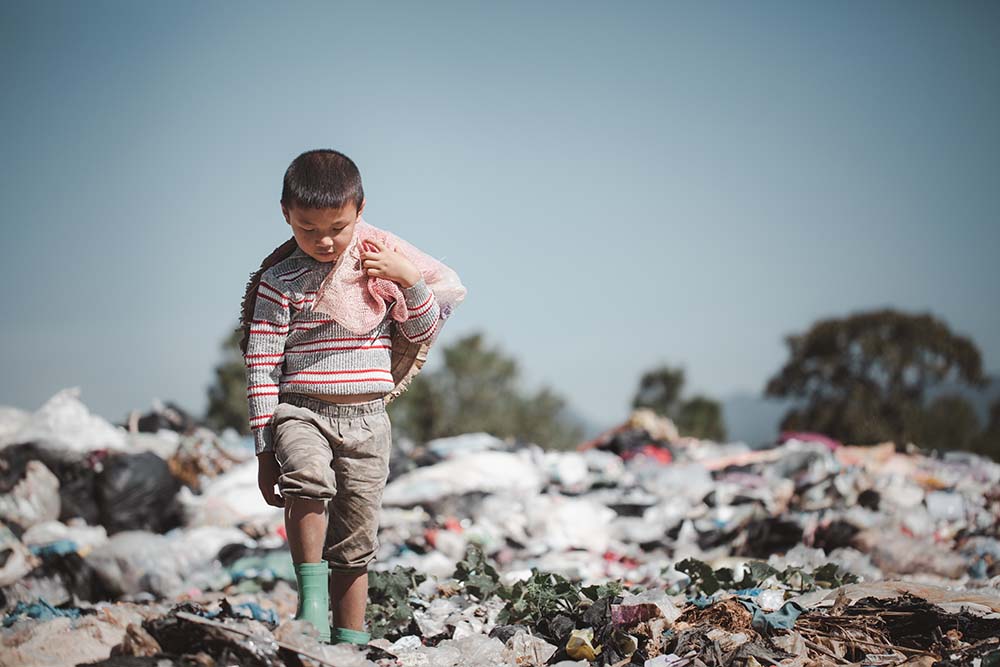Child Labour In India: How To End The Endemic | Her Circle
“Children belong in schools not workplaces,” says a report by the United Nations Children's Fund (UNICEF). “Child labour deprives children of their right to go to school and reinforces intergenerational cycles of poverty. Child labour acts as a major barrier to education, affecting both attendance and performance in school.”
These impactful words matter, especially for the 10.1 million children in India who, according to the Census 2011, work as child labourers. Of these, 5.6 million are boys and 4.5 million are girls. Globally, these numbers are even more alarming—152 million children are engaged in child labour, of whom 64 million are girls and 88 million are boys. This suggests that one in ten of all children in the world is engaged in child labour. In countries like India, child labour works as an endemic—a regular occurrence which plagues the society and impairs our future by keeping the chief drivers of that future away from education, security and opportunity. Here's everything you need to know.
Understanding What Child Labour Is
The International Labour Organization (ILO), child labour is often defined as “work that deprives children of their childhood, their potential and their dignity, and is harmful to physical and mental development.” Essentially, child labour is a result of a number of interlinked factors. Here are a few key ones, according to the Eliminating Child Labour in Tobacco-growing (ECLT) Foundation:
Poverty: Poverty forces children into the labour market to earn money, either as a supplement to meagre household earnings or as a means of survival. However, it's important to remember that child labour is both a cause and an effect of poverty, making it an intergenerational vicious cycle.
Lack of education: Without any education, children are unable to tap into their potential and understand that they need skills development. A lack of access to quality and continuous education actually keeps children stuck beyond the formalised labour force.
Poor access to decent work: Children engaged in labour are usually limited to fields which are unsafe or lack any scope of social protection, fair pay, gender equality. Since they lack education, child labourers also end up being denied better job opportunities as adults, thus continuing the cycle of child labour with their kids in turn.
Limited understanding of child labour: Often, in patriarchal societies, child labour done by young girls is taken to be good for the child in the long run because of gender stereotypes attached with certain kinds of work. This limited understanding of child labour puts certain children, especially the girl child, at a greater risk of falling prey to child labour.
Climate change: Climate change and resultant natural disasters tend to affect the rural poor, especially farming communities. Often, these families end up with no option but to send their children out to work to make up for crop losses.
Conflicts and migration: Children and women are often worst-hit during conflicts. Economic shocks and the breakdown of social support in conflict-ridden areas often lead to child labour as a means of survival. This is proved by the fact that the incidence of child labour in countries and regions affected by conflict is almost twice as high as the global average.

Trends In Child Labour: The Indian Scenario
UNICEF reports that even though child labour rates have declined over the last few years, bonded labour, child soldiers, sexual exploitation (especially of girls) and trafficking still continue to plague most developing economies. Girls are also twice as likely to be taken out of school around puberty and engaged in domestic child labour like cleaning, cooking, caregiving, etc. Children are also at a very high risk of other forms of exploitation, including child sexual exploitation and child pornography. The states with the highest prevalence of child labour are Bihar, Uttar Pradesh, Rajasthan, Madhya Pradesh and Maharashtra.
In India, there are a number of industries which use child labour, including brick kilns, carpet weaving, garment making, domestic services, food services (like small stalls and highway eateries), etc. The following table, provided by the United States Department of Labour, explains the key industries in India that still largely depend on child labour.

The same report by the United States Department of Labour also points out that as of 2021, India has indeed made moderate-level advancements in eliminating child labour in its worst manifestations. For example, the government of Bihar issued a huge pay-out to the Muzaffarpur shelter home case, where 44 girls between the ages of seven and 17 years were victimised for commercial sexual exploitation. As a whole, Indian agencies across states rescued 58,289 children from child labour between 2020 and 2021. However, the report also states that the worst forms of child labour cases in India still remain underreported, largely due to corruption and lack of proper accountability.
The Indian Legal Provisions To Eliminate Child Labour
The Indian Ministry of Labour and Employment has been working to tackle the issue of child labour since 1979, with the formation of the Gurupadswamy Committee. Based on this Committee's recommendations, the Child Labour (Prohibition & Regulation) Act was passed in 1986. The Act prohibited the employment of children in hazardous occupations and attempted to regulate the working conditions of children in other occupations. The list of hazardous occupations is frequently revised and expanded through the Child Labour Technical Advisory Committee, constituted under the 2016 Amendment of the Child Labour (Prohibition & Regulation) Act.
This 2016 amendment expressly prohibits the employment of any child below 14 years of age in any and all occupations, and places further prohibitions on the employment of adolescents (aged 14 to 18 years). When combined with the Right to Education Act of 2009, the 2016 amendment ratifies two of the core ILO conventions:
- Firstly, the minimum age of children at work should not be below the age of compulsory schooling, and should never be less than 15 years except in developing countries.
- Secondly, all hazardous work which is likely to jeopardise a child's physical, mental or moral health should be prohibited.

What You Can Do To Eliminate Child Labour
While legislations and law regulations are in the hands of the governments of the day, there is a lot you can do to help eliminate child labour. Here are a few steps you can take at the personal, familial and even community levels.
Spread awareness: If parents, families and communities are aware and alert about child labour or the disruption of education, child labour can be stemmed right at the beginning. This also means understanding the difference between a child doing chores to learn self-reliance and self-esteem and a child working in hazardous conditions or being exploited for the profit of others.
Send more children to school: The Indian education system might have its flaws, but implementing it is the best way to prevent child labour. Making sure children in your family and community go to school regularly and well beyond puberty can help a lot. If you can afford to be charitable, you could also volunteer with NGOs that work to improve children's access to education.
Ask for more stringent laws: As citizens, you have the right to ask your local, municipal and other government authorities to introduce more stringent measures against child labour. Given that corruption is a major hindrance to the elimination of child labour, asking for more laws and measures on the local level can go a long way.
Discourage child labour around you: We often tend to overlook instances of child labour around us, whether it be in domestic services or at local tea stalls and eateries. Taking account of our own dismissive behaviour and holding those employing children accountable is very important, and you should take every opportunity to call this out.
Support NGOs: There are many NGOs that are working to stop child labour, child trafficking and other forms of child abuse. If you can volunteer for these, then well and good. If not, you can donate, amplify their voices and spread awareness using the tools they share with people.
This “Eyes on Trafficking” story is reprinted from its original online location.
 ABOUT PBJ LEARNING
ABOUT PBJ LEARNING
PBJ Learning is a leading provider of online human trafficking training, focusing on awareness and prevention education. Their interactive Human Trafficking Essentials online course is used worldwide to educate professionals and individuals how to recognize human trafficking and how to respond to potential victims. Learn on any web browser (even your mobile phone) at any time.
More stories like this can be found in your PBJ Learning Knowledge Vault.
EYES ON TRAFFICKING
This “Eyes on Trafficking” story is reprinted from its original online location.
ABOUT PBJ LEARNING
PBJ Learning is a leading provider of online human trafficking training, focusing on awareness and prevention education. Their interactive Human Trafficking Essentials online course is used worldwide to educate professionals and individuals how to recognize human trafficking and how to respond to potential victims. Learn on any web browser (even your mobile phone) at any time.
More stories like this can be found in your PBJ Learning Knowledge Vault.
